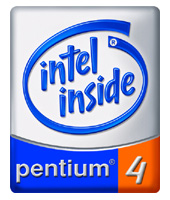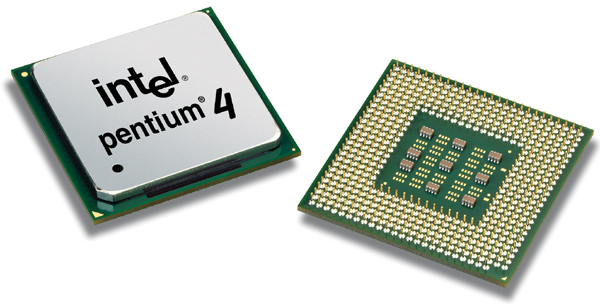
 |

|
| ActiveWin: Reviews | Active Network | New Reviews | Old Reviews | Interviews |Mailing List | Forums |
|
|
|
|
|
DirectX |
|
ActiveMac |
|
Downloads |
|
Forums |
|
Interviews |
|
News |
|
MS Games & Hardware |
|
Reviews |
|
Support Center |
|
Windows 2000 |
|
Windows Me |
|
Windows Server 2003 |
|
Windows Vista |
|
Windows XP |
|
|
|
|
|
|
|
News Centers |
|
Windows/Microsoft |
|
DVD |
|
Apple/Mac |
|
Xbox |
|
News Search |
|
|
|
|
|
|
|
ActiveXBox |
|
Xbox News |
|
Box Shots |
|
Inside The Xbox |
|
Released Titles |
|
Announced Titles |
|
Screenshots/Videos |
|
History Of The Xbox |
|
Links |
|
Forum |
|
FAQ |
|
|
|
|
|
|
|
Windows XP |
|
Introduction |
|
System Requirements |
|
Home Features |
|
Pro Features |
|
Upgrade Checklists |
|
History |
|
FAQ |
|
Links |
|
TopTechTips |
|
|
|
|
|
|
|
FAQ's |
|
Windows Vista |
|
Windows 98/98 SE |
|
Windows 2000 |
|
Windows Me |
|
Windows Server 2002 |
|
Windows "Whistler" XP |
|
Windows CE |
|
Internet Explorer 6 |
|
Internet Explorer 5 |
|
Xbox |
|
Xbox 360 |
|
DirectX |
|
DVD's |
|
|
|
|
|
|
|
TopTechTips |
|
Registry Tips |
|
Windows 95/98 |
|
Windows 2000 |
|
Internet Explorer 5 |
|
Program Tips |
|
Easter Eggs |
|
Hardware |
|
DVD |
|
|
|
|
|
|
|
ActiveDVD |
|
DVD News |
|
DVD Forum |
|
Glossary |
|
Tips |
|
Articles |
|
Reviews |
|
News Archive |
|
Links |
|
Drivers |
|
|
|
|
|
|
|
Latest Reviews |
|
Xbox/Games |
|
Fallout 3 |
|
|
|
Applications |
|
Windows Server 2008 R2 |
|
Windows 7 |
|
|
|
Hardware |
|
iPod Touch 32GB |
|
|
|
|
|
|
|
Latest Interviews |
|
Steve Ballmer |
|
Jim Allchin |
|
|
|
|
|
|
|
Site News/Info |
|
About This Site |
|
Affiliates |
|
Contact Us |
|
Default Home Page |
|
Link To Us |
|
Links |
|
News Archive |
|
Site Search |
|
Awards |
|
|
|
|
|
|
|
Credits |


|
Product: Pentium 4 2GHz - Intel D850MD & D845HV
Motherboards Company: Intel Website: http://www.intel.com Estimated Street Price: $389.00 (for the CPU) Review By: Julien Jay |
New SSE2 Instructions Set
|
Table Of Contents |
Intel introduced the MMX (MMX for MultiMedia eXtensions) instructions set back in 1996: this was the first instruction addition to the x86 architecture since the i386 was released. Remember, the MMX instruction set was full of multimedia dedicated features that were here to accelerate applications which used them. MMX applications came a bit later on the market but most users enjoyed MMX benefits especially in games since game developers adopted them quickly. More recently Intel added SSE (Streaming SIMD Extension) to its Pentium III: this was a set of 70 supplementary extensions that used the SIMD (Single Instruction Multiple Data) technology just like the MMX or 3D Now (From AMD). SIMD principle is simple: it should treat only one pass of several data with only one instruction. Compared to a standard SISD x86 instruction (Single Instruction Single Data) where one instruction should give one result the SSE can give up to 4 results in the same clock cycle.
The SSE instruction set principally enhances audio and video compression processes as shown by our tests: indeed compressing an audio file of 130 MB took 8.5 seconds against 10.3 seconds using a Pentium III 1GHz: for this kind of task the Pentium 4 boosts performance up to 28%. SSE 2 brings several enhancements dedicated to boost MPEG 2 encoding and file encrypting processes. First it adds 144 new instructions (oriented on memory and cache management) to the SSE & MMX existing ones but it can now handle integers of 128-bit numbers (1 per cycle), and double precision floating of 64-bit (two per cycle). Just like the MMX the SSE 2 set of instructions is no use if you don’t have compliant applications that take benefit from it: actually no applications manage it except the Direct X 8.0 API. But some compatible applications should be out very soon like the Windows Media Encoder 2, Dragon Naturally Speaking 4, etc. We also ran another test showing the undeniable power the Pentium 4 brings to high demanding multimedia applications: compressing an Indeo video of 15MB into an MPEG2 one took 1.05 minutes against 1.38 minutes for the Pentium III 1GHz, showing a difference of more than 42%. The performance enhancements shown by the tests are due both to the higher frequency of the CPU and its various MMX and SSE instructions.
Pentium 4 2GHz CPU Design
The Intel Pentium 4 2.0 GHz is engraved using 0.18µ technology and comes with 42 million transistors (in comparison an Athlon uses 37 million transistors when the latest GeForce 3 GPU from nVidia uses 57 million of transistors). The brand new µPGA Socket478 package inaugurated by the Pentium 4 2GHz, is the new socket for future Pentium 4 processors. It means Socket 478 based motherboards will be upgradeable. Even if this new socket permits the Pentium 4 chip being much smaller, despite 55 new added pins, it isn’t compatible with existing Socket423pins motherboards. However we’re expecting to see some CPU converters appear that’d give an added lifetime to existing P4 platforms. A Pentium 4 chip 478pins comes with 108 gold pegs more than on the Pentium III CPU. The Pentium 4 2.0GHz is the latest CPU based on the Willamette core, since future models, expected to be available by the end of this year, will run at 2.1 & 2.2 GHz and use the new Northwood core engraved in 0.13µ.

Intel Pentium
4 478 pins
As usual the top part of the CPU features a metal cover that was added by Intel to protect the die unit from damage if the radiator was incorrectly mounted or too heavy as well as ensuring better thermal dissipation. The heatsink has been totally revamped: indeed Intel has released a new plastic retention mechanism, which is much handier, to attach the cooler & heatsink to the motherboard. Nonetheless you can still use old school Pentium 4 heat sink systems.
Actually the Pentium 4 2GHz is officially compatible with two different chipsets: the Intel i850 & Intel i845. The VIA P4X266 chipset can handle the beast but the legal affair between Intel & Via doesn’t guarantee the durability of VIA’s platform. Not to say Via chipsets are a landmark of bugs. So consumers have two reasonable choices: either adopt an i850 based motherboard using RAMBUS memory for the best performance or an i845 motherboard with cheap SDRAM. Obviously many customers won’t realize a P4 1.7GHz/i845 might be slower than a P4 1.5GHz/i850.



